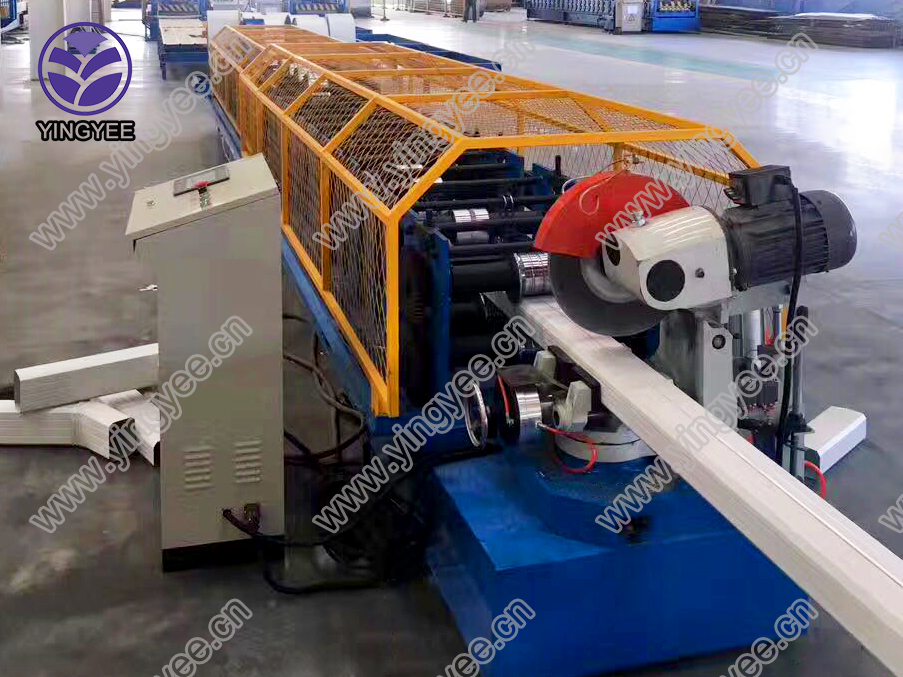
The T-Bar Ceiling Frame Making Machine Revolutionizing Ceiling Production
In modern construction and interior design, efficient and precise materials are essential for both functionality and aesthetics. One prominent component used in commercial and industrial spaces is the T-bar ceiling grid, which supports various types of ceiling tiles and panels. The T-bar ceiling frame making machine has emerged as a groundbreaking solution for manufacturing this vital structural element with speed and accuracy.
Understanding T-Bar Ceilings
Before delving into the specifics of the T-bar ceiling frame making machine, it's important to understand what a T-bar ceiling is. This type of ceiling uses a system of lightweight metal strips shaped like the letter T that forms a grid overhead. The T-bars create a framework that can support acoustic tiles, drywall, or other types of ceiling panels while allowing for easy access to building infrastructure like electrical wiring and plumbing.
The Importance of Automation
Traditionally, the production of T-bar frames involved manual processes that could be time-consuming, labor-intensive, and prone to human error. The introduction of the T-bar ceiling frame making machine transforms this process through automation. These specialized machines can produce consistent, high-quality T-bar frames at a much faster rate than manual methods.
Automated machines ensure uniformity in the manufacturing process, which is crucial for compatibility with various ceiling tiles and installation requirements. Furthermore, they reduce labor costs and minimize waste by optimizing material usage. Manufacturers can produce T-bar ceilings in large quantities to meet rising demands in the construction industry.
How It Works
A typical T-bar ceiling frame making machine is equipped with several key features that facilitate the production process
. First, the machine usually comes with a coil feed system, allowing large rolls of metal to be shaped into T-bar frames. The material is fed into the machine, where it undergoes processes like cutting, punching, and bending.Advanced CNC (computer numerical control) technology is commonly employed in these machines. This allows for precise programming that can accommodate various specifications, dimensions, and designs. Operators can easily adjust settings to create different types of T-bar frames, catering to different installation requirements and architectural designs.

Benefits of Using T-Bar Ceiling Frame Making Machines
1. Quality Assurance Automated machines provide high-quality output that adheres to strict industry standards. The precision of the cuts and bends ensures durability and aesthetic uniformity in the final product.
2. Increased Production Speed These machines allow for continuous operation and higher output rates, meaning manufacturers can fulfill orders more quickly without compromising quality.
3. Customization With CNC technology, manufacturers can easily switch between different designs or specifications, providing flexibility for custom orders while maintaining efficiency.
4. Labor Savings Reduced labor requirements minimize the need for skilled laborers, which can offset the initial investment costs in the machine.
5. Lower Material Waste The accuracy of the machine helps reduce material waste significantly, as each cut and bend can be pre-programmed for exact measurements.
Conclusion
The T-bar ceiling frame making machine signifies a significant advancement in construction technology, merging automation with traditional manufacturing processes. In a world where speed, efficiency, and precision are paramount, these machines not only meet the demands of modern construction but also set new standards for quality and customization.
As the construction industry continues to evolve, embracing innovations like the T-bar ceiling frame making machine will be essential in driving productivity and ensuring that buildings are not only functional but also visually appealing. Whether for commercial spaces, offices, or industrial settings, the ability to produce high-quality T-bar ceilings promptly will undoubtedly play a pivotal role in the future of architecture and design. This modern approach to ceiling production highlights the importance of machinery and technology in shaping our built environment, paving the way for even greater innovations in the years to come.